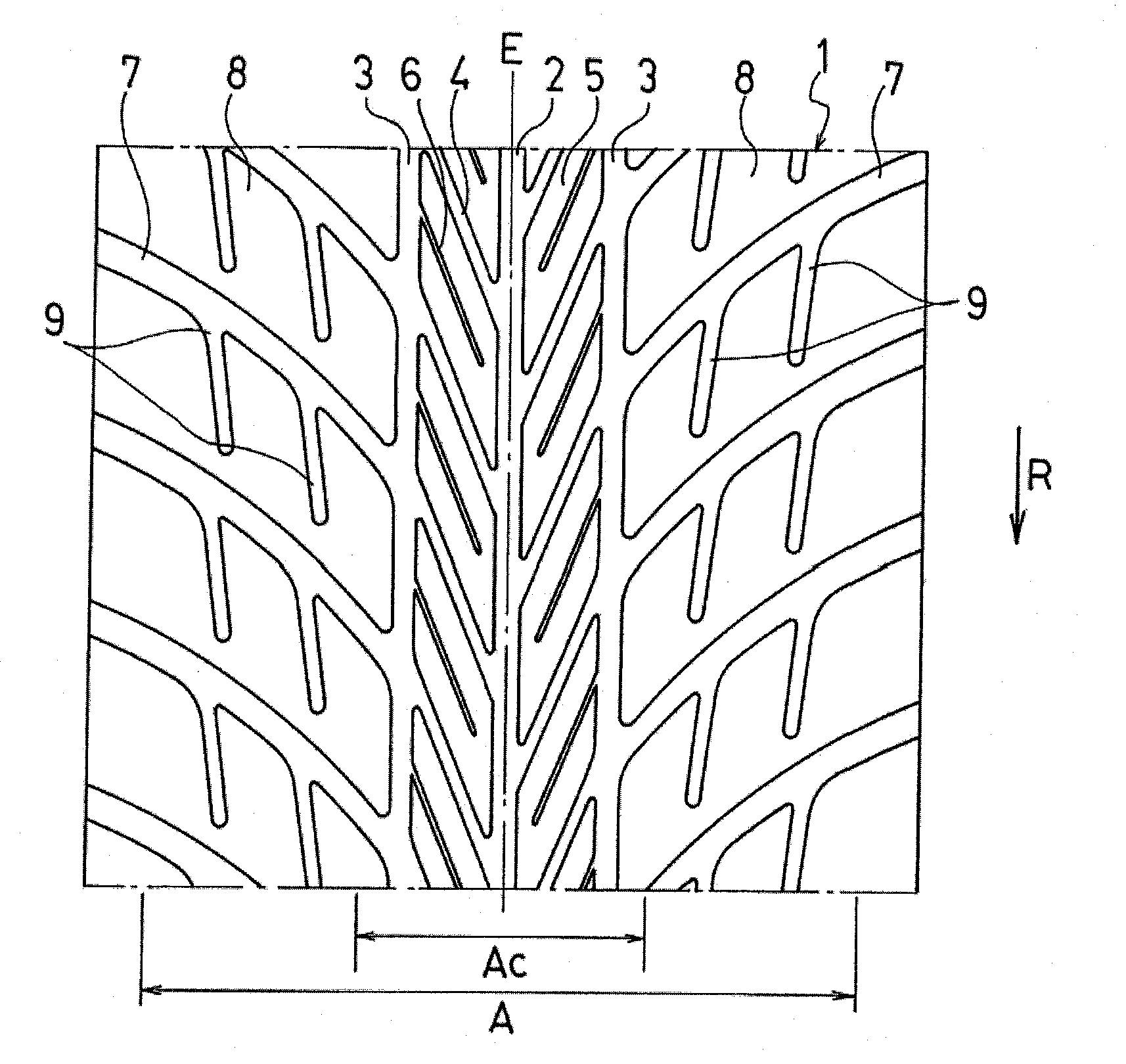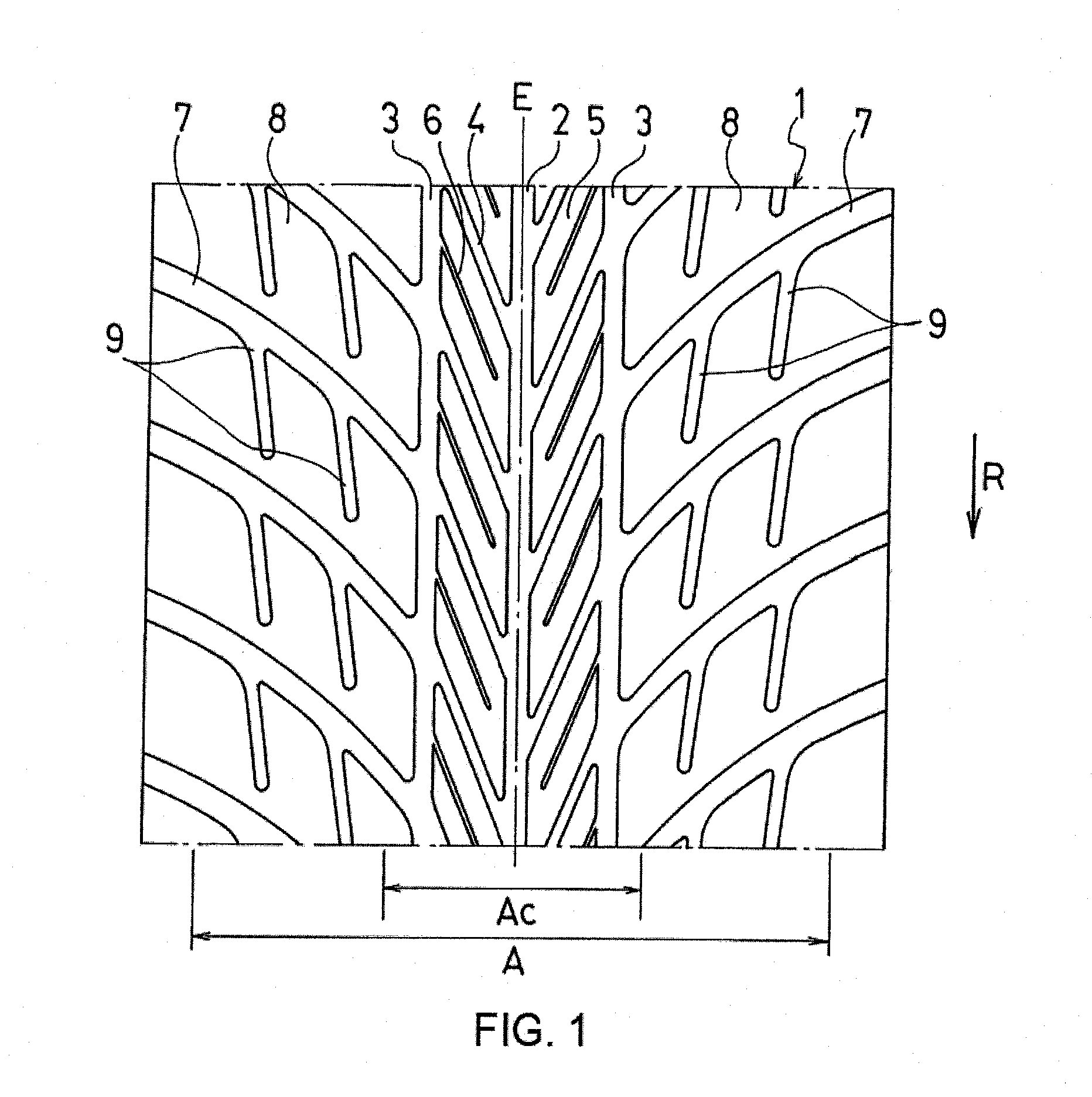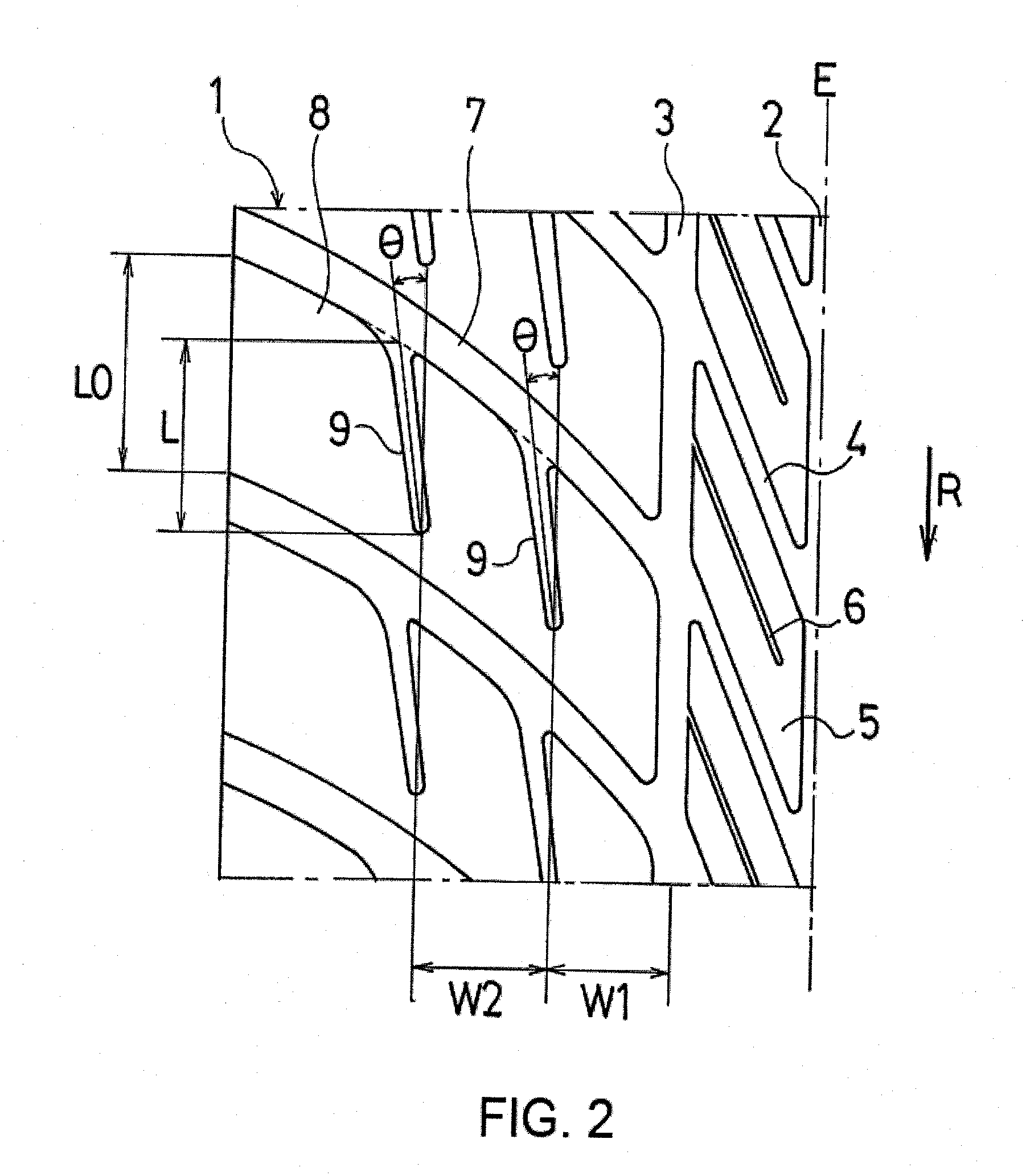Pneumatic tire
a technology of pneumatic tires and tires, applied in the field of pneumatic tires, can solve the problems of adverse effects, water remains in the tire housing, and water pushed backwards, and achieve the effects of sufficient hydroplaning prevention performance, suitable running performance, and reduced water pushed backwards
- Summary
- Abstract
- Description
- Claims
- Application Information
AI Technical Summary
Benefits of technology
Problems solved by technology
Method used
Image
Examples
examples
[0036]Tires having a designated rotational direction and different tread patterns were prepared for a conventional example, Examples 1 to 3, and Comparative Examples 1 to 4. The tire size was 280 / 710R18.
[0037]As shown in FIG. 1, the tires of Examples 1 to 3 are tires wherein, when an entire area having a width 85% of the total tire width and a center area having a width 30% of the total tire width are defined in the tread portion, one center main groove and two subsidiary main grooves extending in the tire circumferential direction are provided in the center area; a plurality of angled grooves that extend at an angle, in a direction opposite the rotational direction, towards the outside in the tire width direction are provided between the center main grooves and the subsidiary main grooves; sipes extending along the angled grooves from the respective subsidiary main grooves are provided in each block partitioned by the angled grooves and the end on the tire equatorial line side of t...
PUM
 Login to View More
Login to View More Abstract
Description
Claims
Application Information
 Login to View More
Login to View More - R&D
- Intellectual Property
- Life Sciences
- Materials
- Tech Scout
- Unparalleled Data Quality
- Higher Quality Content
- 60% Fewer Hallucinations
Browse by: Latest US Patents, China's latest patents, Technical Efficacy Thesaurus, Application Domain, Technology Topic, Popular Technical Reports.
© 2025 PatSnap. All rights reserved.Legal|Privacy policy|Modern Slavery Act Transparency Statement|Sitemap|About US| Contact US: help@patsnap.com



